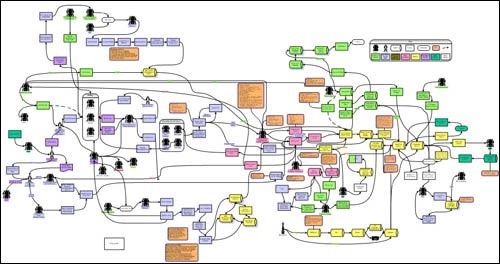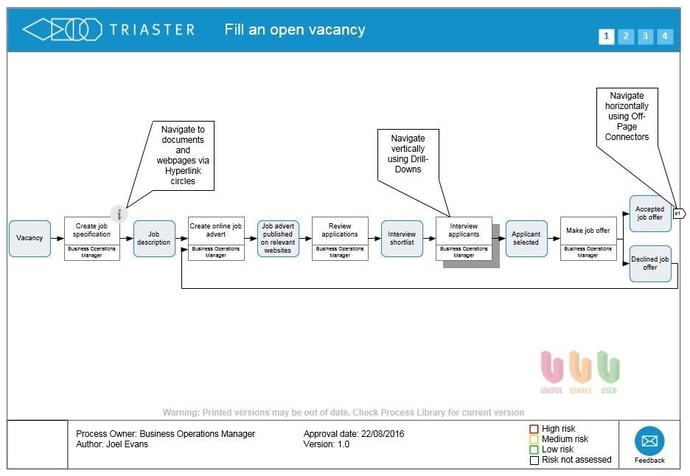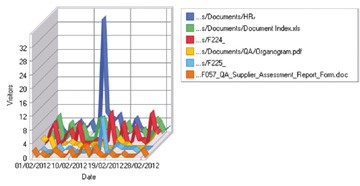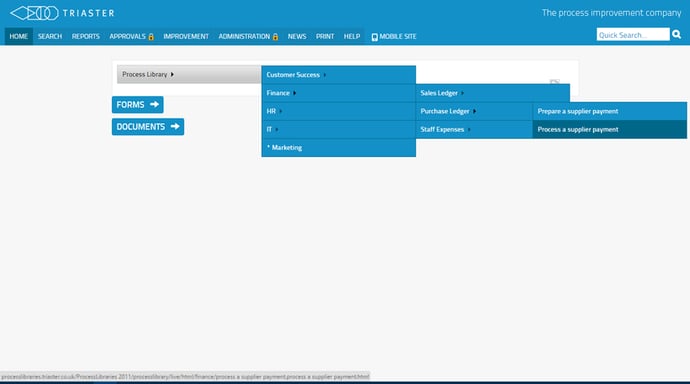Recently a Quality Manager from a large organisation that I was visiting, tried to show me an example process map in their current Business Process Management (BPM) system.
The first two pages that we attempted to visit produced an error and the third attempt took us back to the page that we started on. The system was too complex.
There was no uniformity between pages. Each department had structured their processes differently and also used a mixture of text documents, process maps and diagrams. This was not an isolated event. Time and time again I come across the same issue – complex BPM Systems.
Is this a problem that you are grappling with too?

If so, here are a few ideas you could use to ensure that your BPM system does not end up being too complex, and therefore unusable.
Consistency is Key
Consistency is key in creating a Business Process Management system that is simple to use.
For example if you are trying to find out how to raise a purchase order, and you find your way into a procedural document, but the next time you visit the system you find yourself in a high level process map with little detail on how to carry out the identified tasks, you will no doubt be confused as to why there is no standard way to communicate this information.
To achieive consistency Triaster recommend adopting a governance policy for your BPM system. Within this you can specify the acceptance criteria for documents that will be added to the system.
For example, agree a process mapping approach such as the Noun-Verb Methodology and then only maps adhering to this approach will be accepted into the system.
Also agree the way that additional information will be presented, and this approach must be used throughout the organisation.

BPM Content Accuracy is Key
Your Business Process Management system should assist you to make sure that the content within the system is accurate. It needs to provide a workflow, which enables regular reviewing and re-working of the information to keep up with process changes within the organisation. I remember an auditor once commenting that she ‘didn’t know why people made life so hard for themselves, as all you need to do (in a process mapping context) is to say what you do, and then do what you say’.
Ensure that your processes are reviewed regularly and updated according to feedback and changes within the business. A Standard Triaster system has a built-in approvals and review workflow, which makes the maintenance and updating of documents really easy and efficient.
BPM Structure is Key
You can easily have a complex BPM system if it is too large. A Business Process Management system is both easier to manage and use, if it is separated out logically. If you are running multiple projects, or are responsible for creating and sharing the whole organisation’s content, you need to ensure that your Business Process Management system can be separated out logically, with ring-fenced areas for sensitive or secure information.
For more information on how to do this, please read: How you can share your Business Process Management system with your supply chain without compromising security and content.
BPM User Feedback is Key
Make sure that you listen to your end users. They will let you know if the system is too complex. Your BPM system should facilitate a feedback mechanism. Triaster recommend having a feedback button on every process map, document or page within the system, so that end users can report what they like or do not like, and what works and does not work. An analytics tool may be useful here too, something like Weblog Expert (take a look here at how Fugro GEOS measure the usage of their Triaster Business Process Management system).
Using an analytics tool will help you to identify the lesser used areas of your Business Process Management system, from which you can then experiment to improve the usage.


BPM System Navigation is Key
Your Business Process Management system should be almost invisible. By that, I mean your audience should be able to get in, get the information they are looking for, and get out very quickly and efficiently. A great example navigation is shown below.

Take a look here at some of the ingenious ways some of Triaster's customers have designed the look, feel and navigation of their Business Process Management system.
We know that Triaster systems won't suit every organisation but if you would like to find out more about how Triaster can help deliver a consistent, accurate and easy to navigate BPM system, join one of our “Why Triaster?” webinars here.
Related articles:
Problems with Business Process Management (BPM): Getting employees to follow the process
How to share your process maps in an interactive and engaging way
Written by Joel Evans
Joel joined Triaster in June 2014 and spent several years delivering consultancy and training services on site with customers, helping them to achieve many different business improvement objectives, in many different corners of the world. He left Triaster in November 2016 in order to move back closer to family.
